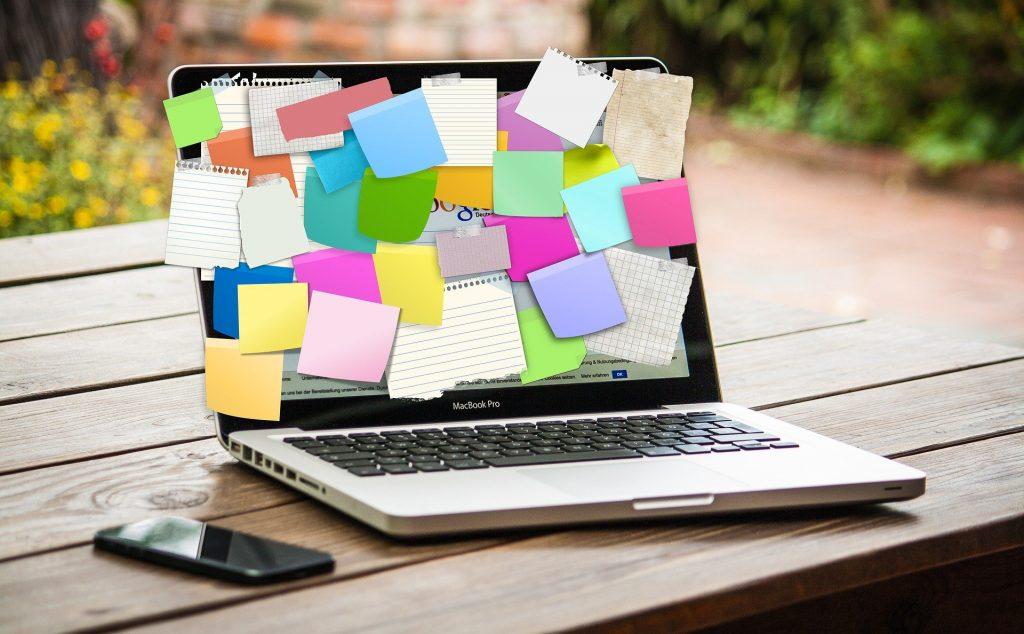Get Things Done, Stop Multitasking!
Share
Some people pride themselves on being gifted multitaskers, boasting their ability to complete several tasks at the same time. In a world where everyone wants more in less time, multitasking could seem like the ultimate answer to productivity and work efficiency. However, most of the time, multitasking does more bad than good, actually stifling performance and productivity. Let’s consider the following scenario:
The higher ups have requested you submit an important report by tomorrow. You’re on it! You’ve got your coffee, your water bottle and no scheduled meetings—you are determined to do great on this one! 20 minutes in, you get an instant message from a colleague. You answer the quick question and get back to the report. A minute later, you receive a meeting request for a department meeting. You hit the “accept” button and glance back at your report. That’s when you remember you needed to approve a vacation request. You tend to that and get back to the report, but the phone rings. You read the caller ID, you need to get this one…
Before you know it, it’s the end of the day. You feel stressed and emotional. Your report is nowhere ready and you haven’t addressed half of your daily tasks. As time goes by, you watch as more and colleagues head toward the exit door. The office is getting quieter. You tell yourself: “this is going to be a late night”. Soon enough, it’s a text message from home that gets your attention. “Will you be home before the kids go to bed?” No. But you did promise you would take care of the swimming lesson registrations. That’s today! You get that done and get back to that dreaded report. A few hours later, you are finally done. As you shut the office lights, you tell yourself: “What a crazy, busy day. Thankfully, I’m a great multitasker…”

We’ve all had those days, where we are being pulled in a thousand different directions. However, it is how we handle the interruptions from our main task that will define our efficiency and overall productivity.
In the example above, the subject’s behavioral pattern of jumping from one piece of business to another, resulted in a downhill slope of frustration, yet the subject defined it as “great multitasking”. Unfortunately, too many employers praise this type of “busy employee” syndrome. However, “busy” does not always mean “efficient”. Most people don’t realize that busyness is actually quite unproductive. Is multitasking to blame? Let’s see.
What is Multitasking?
The simple definition of multitasking is doing 2 things or more at the same time. While this seems simple and very possible (after all, we all feel like we’re constantly doing 20 things at once), the truth is much more complex.
The term “multitask” was first published in the 1960s and it was in the context of computing. Soon after, the term “multitasking” was applied to human tasks. Since then, scientists have come up with two types of multitasking.
Concurrent multitasking means physically doing two things simultaneously. For example, driving while listening to music.
Can concurrent multitasking be done? The short answer is sure, but you can only effectively engage in concurrent multitasking when the tasks executed use different parts of the brain, such as talking while walking. However, this is not what we are interested in here. What most professionals reading this article are probably wondering is if humans can handle—and equally focus on—several somewhat mentally complex tasks at the same time. Well, the answer is no, they cannot.
In an instance where two or more mentally complex tasks are being done at the same time, what the brain is actually doing is switching the individual’s focus from one task to the other. Which brings us to sequential multitasking or serial tasking.
Sequential multitasking involves switching rapidly between tasks within a specific period of time. For example, answering an email, while talking on the phone with a client. Although people who engage in sequential multitasking feel like they are completing several tasks simultaneously, they are, in fact, focusing on one task for a short period of time, then switching their focus onto the other task at hand, and, if needed, returning back to the original task they were not able to complete.

According to the information above, the multitasking that we do at work is not at all what we think. What we refer to as multitasking, is actually a series of short attention spans that we divide between a given amount of tasks. The constant switching between one activity to the next, hinders productivity and often results in a juggling act, where all tasks seem equality important and urgent, yet none is ever completed or, at least, completed well.
Our brain is not intrinsically good at handling multiple tasks, so when we force ourselves to do it, several things can go wrong:
Recent studies also show that, over time, people who practice constant multitasking can suffer from memory and learning impairment, a decrease in overall focus and an increase in stress levels.
So, if more bad than good comes from multitasking, why is it so encouraged in our current competitive business world?
People seem to be enamoured with the idea of multitasking and the feeling of excessive busyness it brings to them. They wear their “I’m extremely busy” badge with pride and relish at the illusion of “handling it all”. However, this euphoria crashes when the brain gets tired, often creating a snowballing effect of negative and destructive emotions. This is what happens in our example above. Our subject fails to prioritize and schedule accordingly. As a result, the priority task (the report) was not actually completed until the subject gave it the focus it required.
In other words, an effective time management strategy would have helped our subject complete the report much earlier in the day, allowing time for other important daily tasks, a much more relaxed work experience and a better quality of life.
